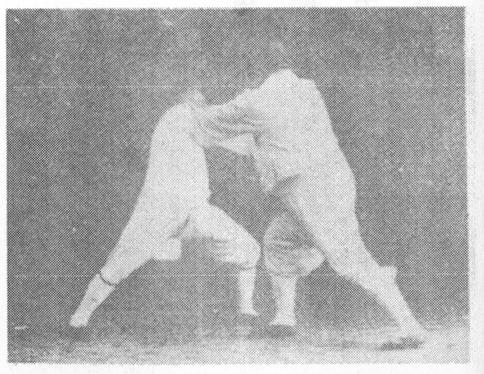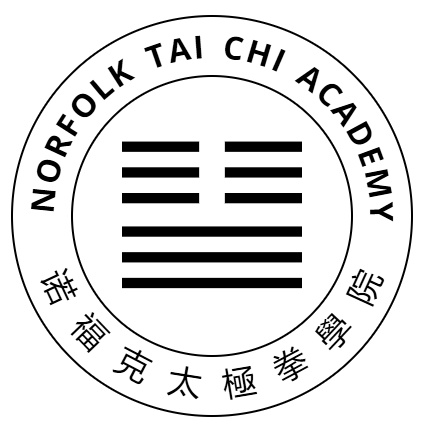What on earth can the name of this movement mean? The names of the movements are recorded at least as early as 1931, when they appear in Yang Cheng-Fu’s book “Applications of Taijiquan“. The Chinese characters 抱虎归山 literally say: “Embrace tiger, return (to) mountain”. The tiger is a fierce animal: powerful and dangerous. The mountain is its home. Here the tiger stands for a fierce opponent who is sent back whence they came, but what is the carrying/embracing about? The name has confused many, with some even speculating that might actually stand for its honomyn 抱, which means leopard. There’s no evidence for this at all, and it’s not the character in Yang Cheng-Fu’s book (although this would have been dictated to a senior student).
 I searched the internet for 抱虎归山 and discovered this scroll by the Chinese artist Zhang Shan-Zi. The scroll dates from 1925, which is before Yang Cheng-Fu wrote his books. Zhang made many tiger scrolls including one bearing as its title the famous Chinese phrase “Crouching Tiger, Hidden Dragon”.
I searched the internet for 抱虎归山 and discovered this scroll by the Chinese artist Zhang Shan-Zi. The scroll dates from 1925, which is before Yang Cheng-Fu wrote his books. Zhang made many tiger scrolls including one bearing as its title the famous Chinese phrase “Crouching Tiger, Hidden Dragon”.
The image makes clear the meaning of “embracing”, but is otherwise a bit of a red herring. The tiger tightly hugs a boulder on a steep mountain side to avoid falling. As Sun-Tzu wrote in ‘The Art of War’ (5th century BCE): “Keep your friends close; keep your enemies closer”. In the Tai-ji movement, the tiger is the enemy.
How does this relate to the mechanics of the movement? First of all, remember that “Cross hands” is a separate movement: when we cross hands, we are not really carrying the tiger, even if this is a handy aide-mémoire. Yang Cheng-Fu’s book says: “From the previous movement (Cross Hands), presume the opponent closes on me from behind at the right corner”. If the opponent is close, then the movement that follows is a trip. The right leg is picked up and placed behind the opponent’s leg. Then we push him back and trip him over.
How is this like “embracing a tiger”? The answer comes when we look at Yang style Tai-ji. In Yang style, when we step to the corner the left hand falls and the right hand rises. Yang Cheng-fu describes two applications for this movement in his book. If the opponent attempts a strike with their right hand (or foot), then the raised right forearm wraps the attacking limb. Then the left hand pushes them over. See the picture below.

So far, so good, but we still have not ’embraced’ our opponent. Yang Cheng-Fu describes another application: if the opponent attacks with their left hand then after the block the (raised) right hand circles round the back of the opponent. We hug them close, with a movement that some have described as like scooping up a child, before the left hand, continuing forward, knocks them over with a push to the face or shoulder.
In the meantime, after generations of oral transmission and evolution have obscured the meanings of the movements, it does no harm to imagine that when we cross hands, we embrace a tiger.
